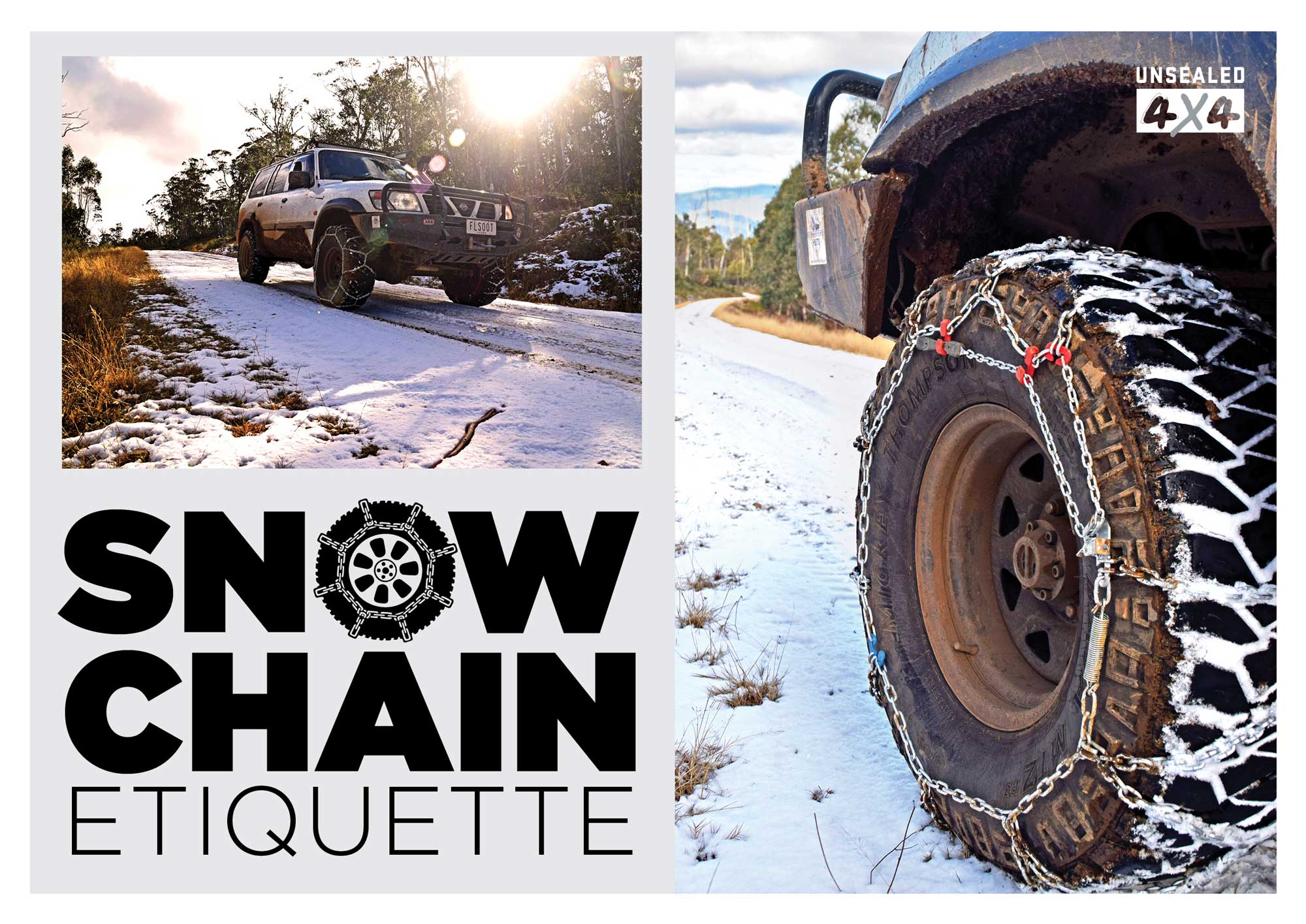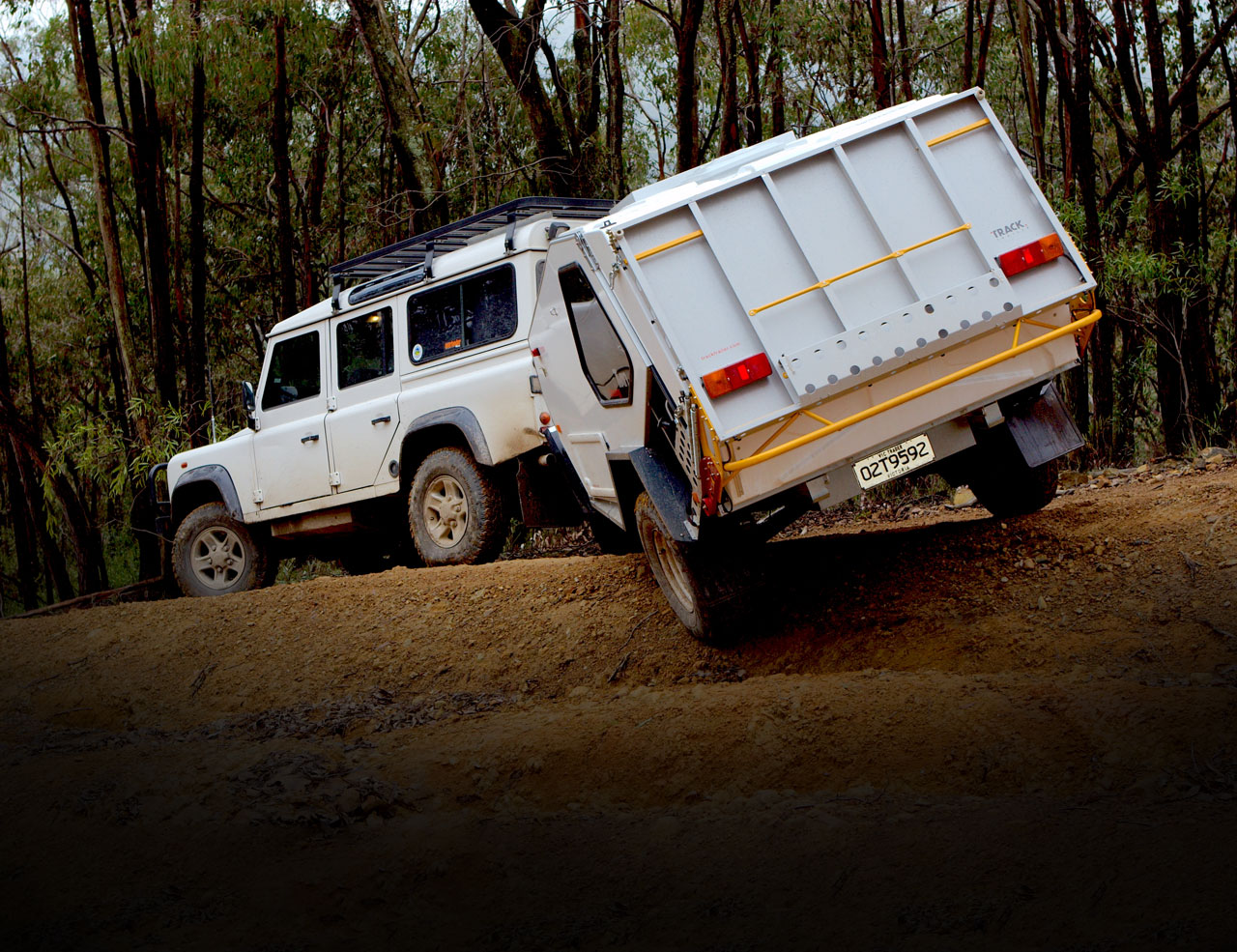7 tips to prevent you from looking like an idiot
You can’t just fit ’em and drive
So, you’ve just finished fitting snow chains to your vehicle. You put them on to compensate for slippery and dangerous road conditions so technically you should be able to drive as normal, right? Wrong. Driving a vehicle fitted with snow chains can be dangerous; driving too fast and erratically can snap the chains and damage your fourby. Remember that chains are an aid, not a fix. The road is still covered in ice and snow so adjust your driving style and stay around 40km/h.
Yes, track damage is a real thing
Whatever the reason that made you decide to fit chains, remember that how you drive seriously affects track conditions. Keep that right foot on a tight leash and not only will you avoid pissing off everyone around you, but you’ll also avoid chewing off a lug or ten.
Chains in bogholes… Australia says no!
We came to this conclusion for one reason (and no, it is not because keyboard warriors on various forums feel this is acceptable and we just wanted to be different). Basically, unless you strip off and take a mud bath before you drive through it, you don’t know what’s in there. There could be more than a few potential chain-snapping snags that you can’t see (or even prod with a stick, for that matter).
Front or rear fitment?
The word going around the how-to videos on YouTube (yes, we struggled through 67 minutes of ego-infused torture just so you won’t have to) is to fit chains to the rear. What these vids don’t tell you is that this is the general advice for small, rear-wheel-drive vehicles. The rule to remember? Fit the chains to your drive wheels; although this is not a legal requirement for four-wheel drives. We don’t know about you but we prefer having steering as well as traction. But at the end of the day it really is a personal preference.
Ice, ice baby
Black ice is a silent killer on roads in the High Country and don’t just expect to find it on the main drag through Mt Hotham. If you’re camped overnight in the High Country and you plan on packing up early in the morning, pay close attention to track conditions. If there is a lot of ice and snow around, consider fitting chains (or, at the very least, dropping tyre pressures). It could be the difference between getting home safely or sitting on the side of the road trying to figure out how those EPIRB thingies work. Also, it’s a good thing to remember that compacted snow can be just as dangerous as black ice – so if the road has had a lot of traffic, take care.
But are they really just for snow?
This is a touchy subject. Many people believe that snow chains are designed for exactly that: Snow driving and nothing more. But let’s run through a scenario that actually happened while we were out testing… We came across a track that is primarily 4X4 only, the track is wet for most of the year and consequently it used to have big ruts until the powers-that-be had it graded. After a 300m barely-controlled slide down part of the track, we steered into a gutter. By this time the treads were full of that soft, sticky mud that gives you an extra 200mm on the bottom of your boots. Lowering tyre pressures did nothing; the steep downhill grade was too soft and sticky and traction was zero.
We decided to air up a bit and fit the chains and (you guessed it) they worked a charm. We idled the rest of the way down safely without incident, passing tracks of other vehicles that had veered one way or another off to the side. In this situation chains can be an excellent driving aid. They caused no more track damage than other methods, and it was a nice feeling to have almost full control of the vehicle.
There are different types of chains
There are a few different types of chains to consider. Firstly, the most common chain is a diamond pattern which is designed to have a section of chain in contact with the road at all times (found in most chain hire stores). The diamond pattern chains available for hire are for general on-road use, but they do come in common mud/all-terrain tyre sizes.
Ladder-style chains are the ‘old style’, most often found in a bucket on the top shelf of grandpa’s shed gathering dust. Victorian alpine resorts have guidelines that prohibit the use of ladder-style chains. The reason for this is they have been deemed unsafe because they do not prevent a sideways slide (unlike a diamond pattern, which does).
Off-road chains are specifically designed for 4X4 use – retaining a diamond pattern but using a stronger design and faster self-cleaning methods. They are built to handle more aggressive use in both mud and snow. Most off-road retailers stock them during the winter months and they can cost up to $700.










I have several times been in the exact same situation as you described above with not having control on a reasonably steep wet soft surface and sliding uncontrolled to rest at the bottom. Fortunately no contact made or damage done. However there was very little to none chance of retracing my steps if needed. The good news was I was in fact carrying chains for all four wheels. No use in the box they came in, right.
But knowing they were there and could be used was the difference to that being a stress not having an option. With only a hand winch at the time they were a relatively inexpensive piece of insurance when travelling as a lone vehicle all be it just an over night trip.
The second thing I would like to comment on is this. We all have seen, as you have already mentioned, the cut up state of many tracks we have the pleasure of coming across. I think it would be reasonable to say that is highly likely the reason for the cut up condition is not from a responsible 4×4 owner out enjoying the fresh air and their beloved vehicle, rather extra large mud tyres on a cowboys rig seeing how many of those horses he can unleash all at once.
With intentional and considerate use, chains can reduce damage to tracks and vehicle and provide a far safer option than throwing the outcome to the whims of Mr Gravity and Mrs Chance.